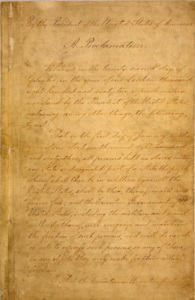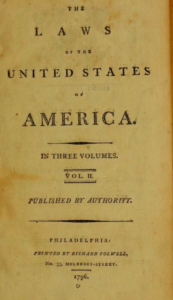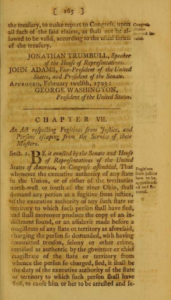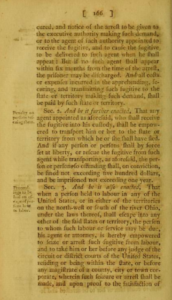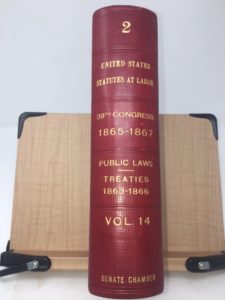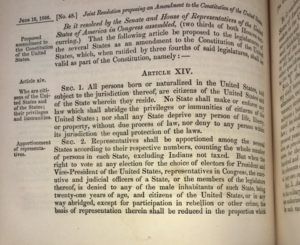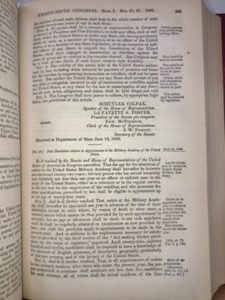In honor of Juneteenth, StatutesandStories.com is pleased to assemble several posts that shed light on our nation’s lengthy struggle with slavery, its legacy and the advancement of civil rights.
While July 4th is properly celebrated as our nation’s birthday (when we celebrate independence from Britain), Juneteenth is the celebration of freedom from slavery for those who did not enjoy the blessings of liberty until the Civil War had been fought and won. The holiday is also known as “Juneteenth Independence Day,” “Freedom Day,” or “America’s Second Independence Day.”
Juneteenth commemorates the official announcement of the abolition of slavery in Texas, on June 19, 1865. Juneteenth is recognized as an official state holiday or special day of observance in forty-six states. Texas became the first state to recongize Juneteenth as a government holiday in 1980.
On June 19, 1865, approximately two months after General Lee’s surrender to Grant at Appomattox, Union soldiers arrived in Galveston. After they read the Emancipation Proclamation aloud, they proclaiming that slaves were now freed in Texas, the last of the Confederate states to learn of the end of the war.
The following blog entries run the gamut from the Fugitive Slave Act of 1793 (which implemented the fugitive slave clause in the Constitution and created an enforcement mechanism demanded by the South) to the Civil Rights Act of 1866 (the country’s first civil rights law).
The bitter struggle between northern abolitionists and southern pro-slavery supporters (“fire eaters”) is illustrated by the northern PERSONAL LIBERTY LAWS that were adopted as a means of resisting the Fugitive Slave law. Leading up to the Civil War, members of Congress battled over Congressional anti-slavery petitions, which were forced to be tabled by the HOUSE GAG RULE.
For more background about the pernicious roots of the institution of slavery – a word which is not mentioned in the constitution – readers are invited to examine a recent post about THE FUNDAMENTAL CONSTITUTIONS OF SOUTH CAROLINA, JOHN LOCKE AND THE SLAVE CODE OF 1740.
While slavery was outlawed by the 13th Amendment, the practice of debt servitude continued into the 20th Century, where it was a theme of the Civil Rights movement. The early efforts to outlaw involuntary servitude began with the PEONAGE ACT OF 1867, which also applied to enslaved native American populations in the American South West.
On September 22, 1862, President Lincoln provided notification that he would be issuing the Emancipation Proclamation, effective January 1, 1863. Pictured below is an original copy held at the National Archives.
In his famous Cooper Union Address in 1860, Abraham Lincoln cited to Dr. Franklin, Alexander Hamilton, and Gouverneur Morris as among “the most noted anti-slavery men of those times.” In his 1954 Peoria speech Lincoln argued that while many of the founders owned slaves, most opposed it in principle while tolerating it temporarily in the hope that it would be replaced. For this reason, Lincoln asserted that the founders did not mention the words “slave” or “slavery” in the Constitution, but referred only to “persons held to service.” “Thus, the thing is hid away, in the constitution…just as an afflicted man hides away a wen or a cancer, which he dares not cut out at once, lest he bleed to death; with the promise, nevertheless, that the cutting may begin at the end of a given time.”
As described by historian Joseph Ellis in the recent book, American Dialogue:
Lincoln argued that the founding generation regarded it as a moral embarrassment that clearly defied the principles announced in the Declaration of Independence, which was the major reason the delegates in Philadelphia refused to permit the toxic term to contaminate the language of the Constitution. As Lincoln described them, the founders thought of slavery as a cancer they could not surgically remove without killing the infant American republic in the cradle. Throughout the trials and tribulations of America’s bloodiest war, Lincoln maintained he was acting as the agent of the founding generation, so that the Union cause spoke for the true meaning of the American Revolution.
Copied below is a list of blog entries of interest on Juneteenth:
1793 – FUGITIVE SLAVE ACT OF 1793
1807 – ACT PROHIBITING THE IMPORTATION OF SLAVES
1834 – HOUSE GAG RULE , ANTI-SLAVERY PETITIONS, AND “OLD MAN ELOQUENT”
1866 – CIVIL RIGHTS ACT OF 1866 (1st Federal civil rights law)
1867 – PEONAGE ACT (an attempt to outlaw debt servitude)
THE FUNDAMENTAL CONSTITUTIONS OF SOUTH CAROLINA, JOHN LOCKE AND THE SLAVE CODE OF 1740
PERSONAL LIBERTY LAWS – examples of Northern resistance to the FUGITIVE SLAVE LAW
ALEXANDER HAMILTON AND THE ABOLITION OF SLAVERY IN NEW YORK
For an informative discussion and podcast about the history behind the holiday click here for NPR’s “On Point” with Jayne Clayson.
The Meaning of July Fourth for the Negro, Frederick Douglass, July 4, 1852
Pictured below are copies of the Fugitive Slave Law of 1793:
Pictured below are copies of the 14th Amendment, which made all persons born or naturalized in the U.S. citizens of the U.S. and of the state of their residence. In so doing, the 14th Amendment reversed the infamous Dred Scott opinion from 1857, which is universally recognized as one of the worst Supreme Court decisions in American history:

